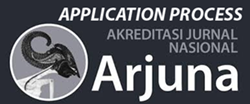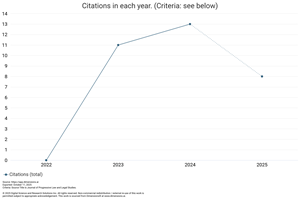Implications of Case Resolution Mechanism Due to Press Coverage through Non-Litigation Channels
DOI:
https://doi.org/10.59653/jplls.v2i01.425Keywords:
mass media, news, Non-litigation channel, Press law, persAbstract
Today's news development in the media is very rapid, both traditional and electronic. Following technological developments, people can receive news from media worldwide directly through various means such as television, radio, newspapers, and even the Internet. Therefore, as a democratic country, Indonesia must be able to fulfill its obligation to guarantee press freedom and encourage the press to serve the interests of the public in seeking information. The national press appears increasingly free and unlimited in today's information technology era. For example, news considered harmful by a particular person or group can cause friction between the press and the public, giving rise to disputes over the behavior of press operators and news considered detrimental by certain groups. All disputes can be resolved through arbitration procedures stipulated in Law No. 40 of 1999 (from now on referred to as the Press Law) through mediation through non-judicial channels. However, not all disputes resolved in such a way can satisfy the parties and create legal certainty.
Downloads
References
Ariefulloh, A., Nugroho, H., Angkasa, A., & Ardhanariswari, R. (2023). Restorative justice-based criminal case resolution in Salatiga, Indonesia: Islamic law perspective and legal objectives. Ijtihad: Jurnal Wacana Hukum Islam Dan Kemanusiaan, 23(1). https://doi.org/10.18326/IJTIHAD.V23I1.19-36
Basrawi, B., Sukri, S., & Eka Mayasari, R. (2023). Law Enforcement of Narcotics Abuse: Case Study of Investigation Process in Narcotics Criminal Acts in The Kolaka District National Narcotics Agency. Journal of Progressive Law and Legal Studies, 1(02). https://doi.org/10.59653/jplls.v1i02.150
Fatah, A. (2019). Indonesian Press Law. Setara Press.
Hutchinson, T., & Duncan, N. (2012). Defining and Describing What We Do: Doctrinal Legal Research. Deakin Law Review, 17(1), 83. https://doi.org/10.21153/dlr2012vol17no1art70
Iwanicz-Drozdowska, M., Kurowski, Ł., & Witkowski, B. (2023). Resolution and depositors’ trust empirical analysis of three resolution cases in Poland. Qualitative Research in Financial Markets. https://doi.org/10.1108/QRFM-06-2022-0113
Jardim, B., Neto, M. de C., & Calçada, P. (2023). Urban dynamic in high spatiotemporal resolution: The case study of Porto. Sustainable Cities and Society, 98. https://doi.org/10.1016/j.scs.2023.104867
Juniver Girsang. (2007). Sangketa Press Settlement. PT Gramedia Pustaka Utama, Jakarta.
Lubis, M. (1980). Subversive Notes. Sinar Harapan.
Nuarsa, I. K. G., Paraniti, A. A. S. P., & Pidada, I. B. A. (2023). Effectiveness of Law Number 2 of 2002 Concerning Police Members Who Commit Alleged Violations or Criminal Acts in the Case of Ferdy Sambo. Journal of Progressive Law and Legal Studies, 1(03). https://doi.org/10.59653/jplls.v1i03.251
Pradana, C. G. W. et al. (2022). The Legal Position of Citizen Journalism in Delivering News to the Public. Journal of Legal Preferences, 2, 229.
Selly Nur Rohmaningtyas. (2005). Legal Mechanism for Resolving Problems Due to Press Reporting through Right to Answer. In Faculty of Law UNAIR.
Sujono, I., & Nugroho, M. (2023). Omnibus Law as Investment Law Reform in Indonesia Based on the Hierarchy of Legislation Principles. Journal of Progressive Law and Legal Studies, 1(02 SE-Articles), 47–65. https://doi.org/10.59653/jplls.v1i02.28
Sukardi, V. A. (2009). Assessing the Welfare of Journalists. Press Council. https://doi.org/10.1007/978-3-319-46994-2_16
Syah, S. (2011). Journalistic Signs from Law to Conscience. Student Library, Yogyakarta.
Syahriar, I. (2015). Press Law Theoretical Study of Legal Certainty and Press Freedom in Indonesia,. Laksbang Pressindo, Yogyakarta.
Wono, H. Y., Supriaddin, N., Amin, F., & ... (2023). Media Sosial, Literasi Digital, Dan Inovasi Bisnis Trikotomi Baru Dalam Manajemen Strategi. … Dan Bisnis, April. https://doi.org/10.15575/jb.v2i1
Downloads
Published
How to Cite
Issue
Section
License
Copyright (c) 2023 Moch Rachmat Prawira Yudha Putra, Toetik Rahayuningsih

This work is licensed under a Creative Commons Attribution-ShareAlike 4.0 International License.
Authors who publish with this journal agree to the following terms:
- Authors retain copyright and grant the journal right of first publication with the work simultaneously licensed under a Creative Commons Attribution-ShareAlike that allows others to share the work with an acknowledgement of the work's authorship and initial publication in this journal.
- Authors are able to enter into separate, additional contractual arrangements for the non-exclusive distribution of the journal's published version of the work (e.g., post it to an institutional repository or publish it in a book), with an acknowledgement of its initial publication in this journal.
- Authors are permitted and encouraged to post their work online (e.g., in institutional repositories or on their website) prior to and during the submission process, as it can lead to productive exchanges, as well as earlier and greater citation of published work (See The Effect of Open Access).
























